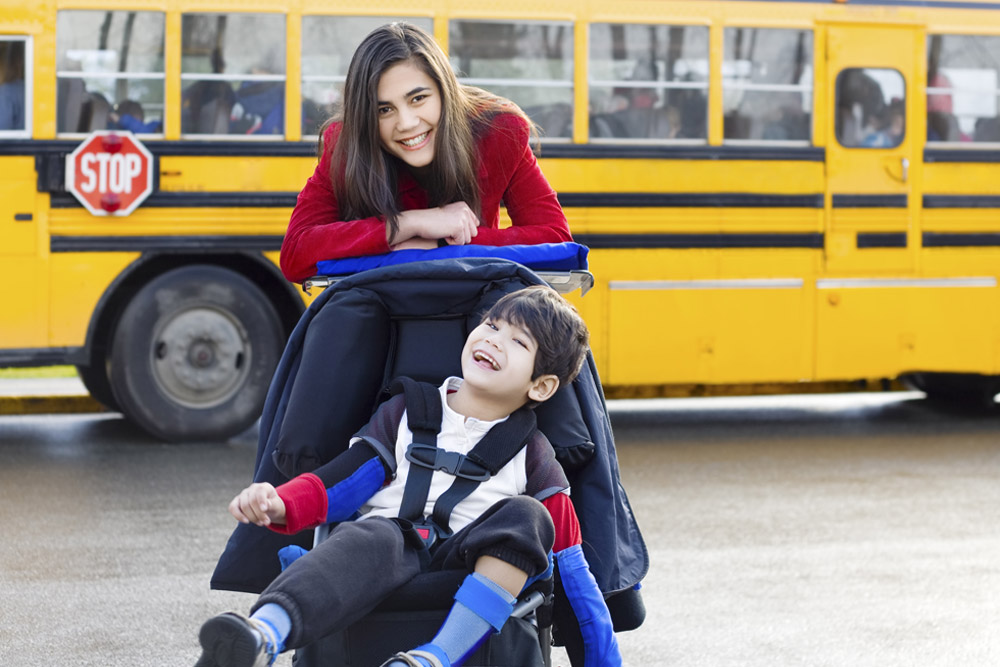
How to Write All the Right PT IEP Goals
Writing effective Physical Therapy (PT) IEP goals is essential to the success of students with disabilities in school settings. As a school-based PT, your job is to ensure that these goals align with educational objectives while meeting the unique needs of each student.
By using the SMART goal framework and collaborating with multidisciplinary teams, you can create a goal-writing process that results in PT IEP goals that are meaningful, measurable, and aligned with a student’s future goals. Learn more from Pediatric Therapeutic Services (PTS) below.
The Role of the School-Based Physical Therapist
School-based physical therapists (PTs) play a vital role in the educational success of students with physical disabilities. According to the American Physical Therapy Association (APTA), PTs ensure a free and appropriate education for students with disabilities, promoting motor development and participation in everyday routines and activities.*
However, this definition only scratches the surface of what PTs do. The school-based PT role is to support students in achieving greater independence in both academic and personal tasks. From helping a child navigate stairs in a multi-level school building to supporting students with mobility challenges in PE class, PTs are integral members of the educational team.
By focusing on immediate and future needs, PTs can create IEP goals that address academic success and long-term independence.
Common Challenges in Writing PT IEP Goals and How to Overcome Them
Writing PT IEP goals can be a challenging task for many reasons. One of the biggest obstacles is ensuring that goals are realistic and meaningful for the student while still being measurable.
Here are some of the common challenges PTs face when writing IEP goals:
- Balancing ambition and realism: It’s easy to be overly ambitious when setting goals, but if the goal is not attainable, it can frustrate both the student and the IEP team.
- Differing expectations among team members: IEP teams consist of professionals with different perspectives. PTs must work to ensure that their goals align with both the educational needs of the student and the objectives of the broader IEP team.
- Addressing diverse student needs: Every student is unique, and their needs will vary greatly. PTs must be prepared to write individualized and adaptable goals for each student’s specific needs.
By recognizing these challenges early on and applying strategies to address them, PTs can write IEP goals that truly support the student’s growth and success.
Three Critical Questions to Ask When Writing PT IEP Goals
To ensure that PT IEP goals are meaningful and effective, asking the right questions before writing them is important. By reflecting on the student’s environment, needs, and desires, PTs can craft goals that will truly support the student’s progress.
What is the environment in which we will be supporting the student?
The environment plays a huge role in shaping the goals for a student. A PT working with a student in a small, one-level school building will have different considerations than one working with a student in a large, multi-level school with elevators and stairs. Understanding the physical environment helps tailor goals that are relevant to the student’s real-world needs.
How does the student’s need impact their school day?
Assessing how the student’s physical needs affect their ability to access education is essential. For example, if a student has difficulty navigating the school grounds or participating in PE class, these barriers should be addressed in their PT goals. PTs need to develop strategies that help the student fully access their education.
Does the student want to address the need?
A key factor in successful therapy is the student’s willingness to engage in the process. If the student doesn’t see the value in a goal, their motivation will likely be low, and therapy may not be effective. It’s important to consider the student’s interests and ensure that the goals are meaningful to them.
SMART Goals: A Framework for Success
The SMART goal framework is a proven method for writing clear, actionable, and effective PT IEP goals that focus on specific results.
SMART Goals should be:**
- Specific: Clearly defined with no ambiguity about what is being achieved. For example, instead of setting a vague goal like “improve balance,” a specific goal might be “increase ability to balance on one foot for 10 seconds.”
- Measurable: Include clear criteria for success. For example, “the student will be able to walk up three steps without assistance” is a measurable goal because progress can be tracked.
- Attainable: Goals should be realistic based on the student’s current abilities and needs. A goal that is too ambitious may lead to frustration and disengagement.
- Results-oriented: Focus on outcomes that matter, such as increased independence or improved mobility as a result of therapy.
- Time-bound: Set a timeline for goal completion so that the IEP team can track progress and make adjustments as needed. For example, “the student will increase endurance to 15 minutes of physical activity by the end of the semester” is a time-bound goal.
Using the SMART framework ensures that PT IEP goals are well-defined and actionable, making it easier for the IEP team to track progress and adjust goals as necessary.
Keep IEP Goals Focused on the Future
As physical therapists, it’s essential to keep the student’s future in mind when writing IEP goals. It’s not enough to address the students’ immediate needs; you must be cognizant of how their mobility and physical skills will evolve over time, especially as they progress through different stages of their education.
Here are some questions to help maintain focus on the student’s long-term success:
- Will a pre-K student with mild developmental delays catch up to their peers by the time they leave school-based services?
- How can we help a student with cerebral palsy gain the independence they need to participate in self-care activities?
- Will a student with sensory sensitivities be able to engage in PE class as they grow older?
By considering these future scenarios, PTs can help create IEP goals that set the stage for the student’s continued success in school and life.
Collaborate with Multidisciplinary Teams for Effective PT IEP Goals
School-based PTs are not working in isolation; they are part of a larger multidisciplinary team that includes special education teachers, speech therapists, occupational therapists (OTs), and sometimes even parents or caregivers. The success of PT IEP goals depends on effective collaboration within this team.
PTs must be able to communicate clearly with other team members to ensure that goals are aligned across disciplines. For example, a PT may improve a student’s balance, while an OT may focus on fine motor skills. Both professionals need to work together to ensure that their goals complement each other, rather than competing or conflicting.
Additionally, the PT’s input is essential when addressing physical barriers to learning, such as mobility issues, that may affect a student’s ability to participate in academic activities. PTs bring a unique perspective to the IEP team by identifying solutions for these challenges and creating achievable goals.
How to Engage Parents in the PT IEP Goal-Setting Process
Parents bring insights into their child’s strengths, needs, and goals, which are invaluable when writing PT IEP goals. By involving parents in the goal-setting process, PTs can create goals that reflect the child’s needs at school and at home.
Effective communication with parents helps PTs better understand the student’s capabilities and challenges. For example, parents may have insights into how their child manages mobility at home or in their community. Additionally, parents can provide feedback on how their child is progressing with the goals at home and what changes may be necessary.
It’s important to approach this collaboration with empathy and transparency so that parents feel heard and valued in the process. The more involved parents are in the goal-setting process, the more success and support the student can access.
Create the Right PT IEP Goals for Students Alongside PTS
Writing meaningful and measurable PT IEP goals is crucial for supporting students with disabilities. By using the SMART goal framework, collaborating with multidisciplinary teams, and involving parents in the process, PTs can ensure that their goals will lead to real student progress and prepare students for greater independence in the future.
Remember, the key to successful PT IEP goal writing is focusing on the student’s unique needs, environment, and desires. By staying focused on these factors, PTs can create goals that are truly impactful and help students achieve their highest potential.
Contact PTS today for more information on writing effective PT IEP goals or to download our SMART goal template.
* https://www.apta.org/your-practice/practice-models-and-settings/school-based-physical-therapy
** https://www.understood.org/en/articles/how-to-tell-if-your-childs-iep-goals-are-smart
Tag:pt goal writing

